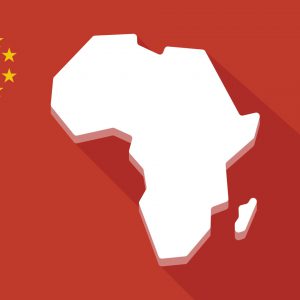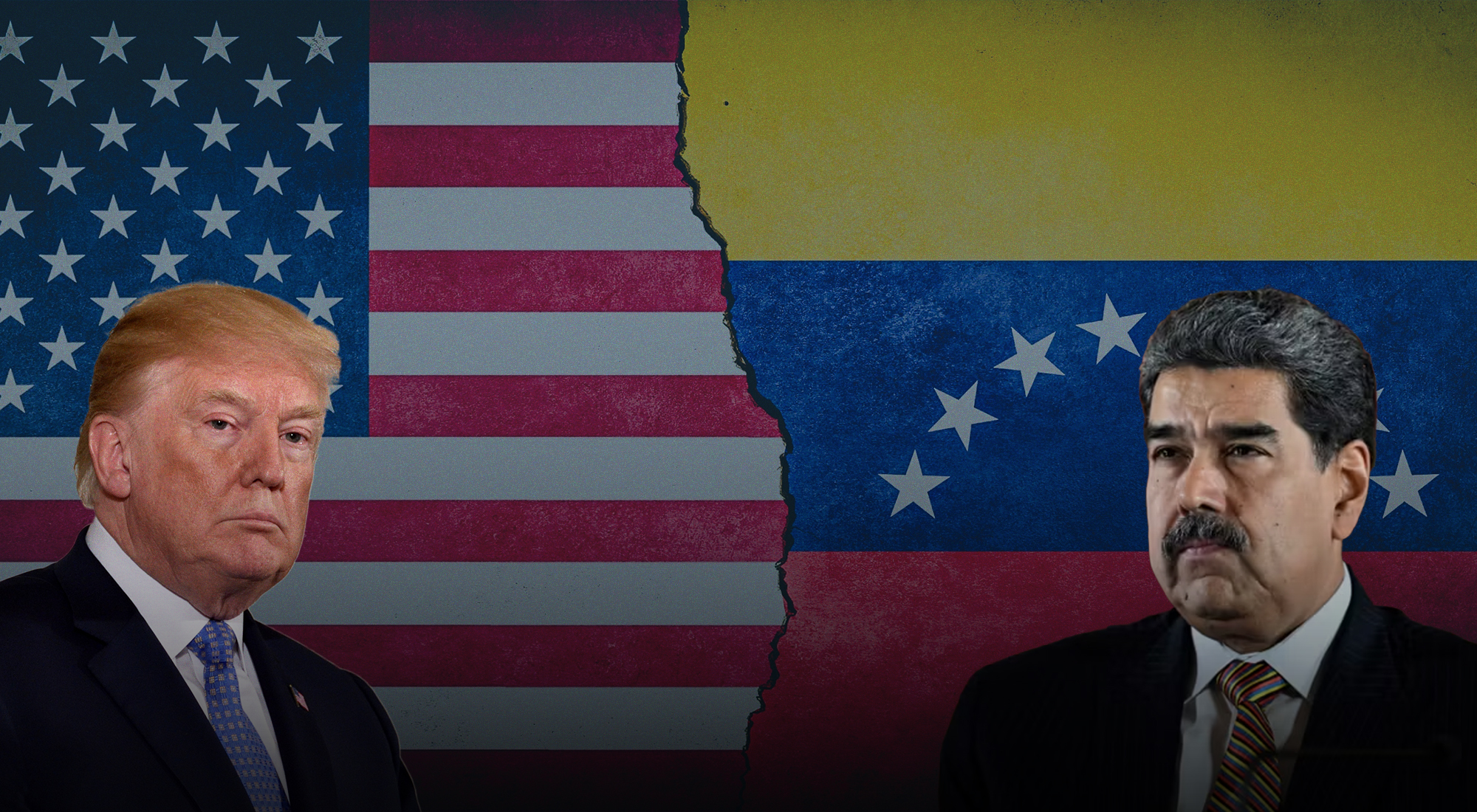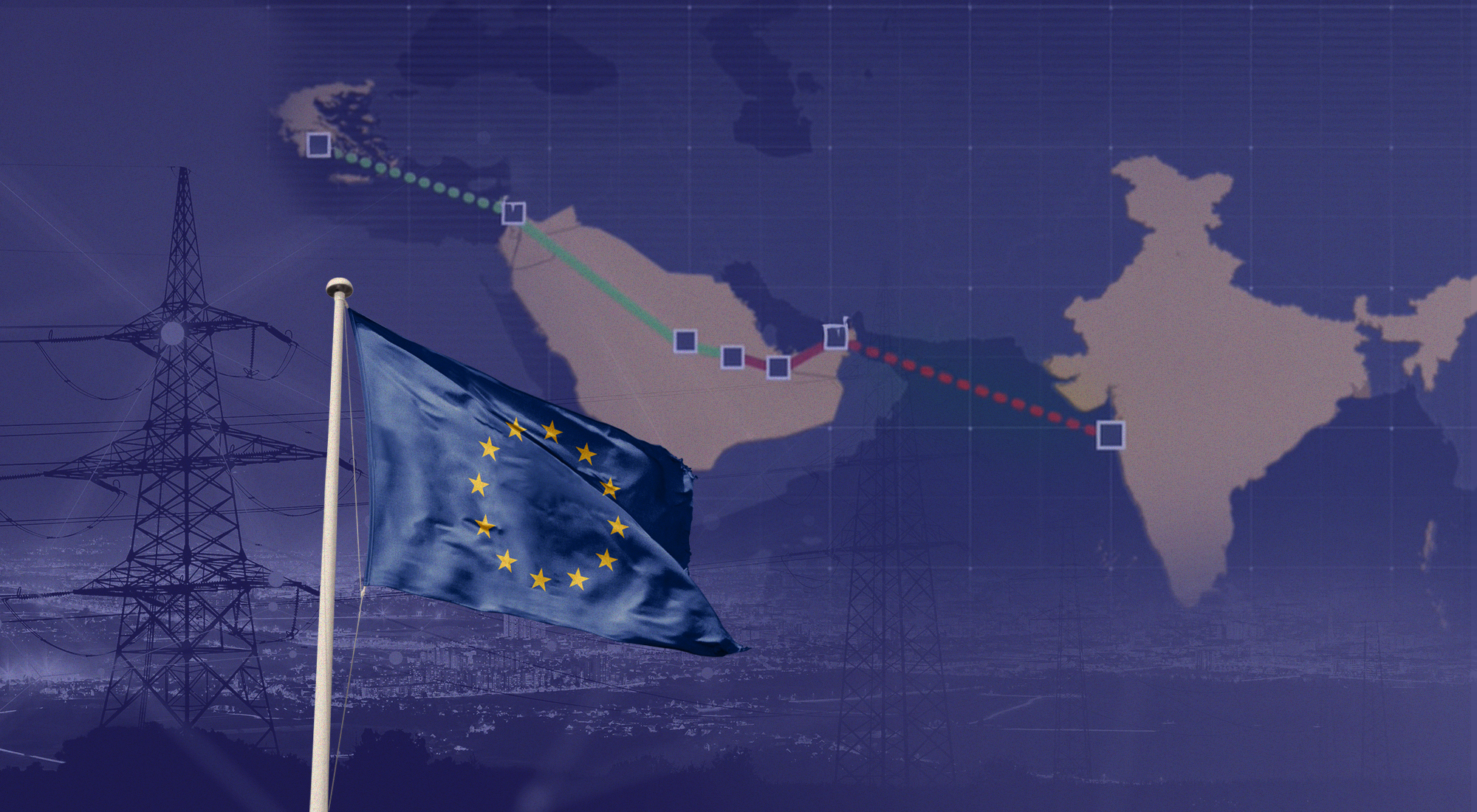This Insight is the outcome of the Young Scholars Research Program at TRENDS Research & Advisory.
Introduction
Although China-Africa relations began many decades ago, the trajectory of these relations is moving toward more expansive ties. In 2000, the Forum on China–Africa Cooperation (FOCAC) was announced as an official establishment, and, in 2009, China overtook the US as Africa’s top trading partner.[1] In recent years, the Chinese trading rate with the continent has grown further. In the first half of 2019, the country’s import and export volume with Africa was over US$ 100 billion. [2] Yet, the Covid-19 pandemic has taken a hefty toll on Africa’s economies, and their trade with China fell 19.3 percent in the first half of the year, affecting the supply chains and leading to the shortage of raw materials.[3]
In 2013, China’s President Xi Jinping announced the Belt and Road Initiative (BRI), also known as the New Silk Road. Projected to connect over 70 countries, the BRI is a massive trans-continental transport project that will link China with Europe and Africa. It aims to expand exchange, boost economic growth, and enhance infrastructure connectivity. [4] Since the initiative’s launch, the African continent – specifically the eastern side – has undergone significant changes. There are differing views regarding China’s presence in Africa. On the one hand, it is viewed as a win-win situation in which China is aiding the growth of local countries. However, at the other end, the Chinese presence is seen as exploitative in that Beijing gains preferential access to local resources while African countries remain in debt. [5] This insight explores China’s actions in three East African countries – Djibouti, Kenya, and Ethiopia. Perspectives from China, Africa, and the US have been drawn from the existing academic literature.
The Belt and Road Initiative
Figure 1 below shows the BRI in blue. The lines show the infrastructure and railway systems that China is constructing to connect over 70 countries.
Figure 1: The New Silk Road [6]

Djibouti
Djibouti and China have maintained close relations over the past 40 years. Their ties are based on mutual political trust that has enhanced their cooperation. In 2017, both countries agreed to forge a strategic partnership to strengthen their economies and boost development. Given China’s economic power, many Djiboutian officials said that China’s involvement would help develop their country and bring new prosperity.[7]
For instance, the Doraleh Multipurpose Port opened in 2017. The port’s one prominent investor is China Merchants Group (CMG), owning a 20 percent share. CMG also has stakes in other ports. [8] China has also planned to fund and construct a Djibouti-Ethiopia water distribution network that mounts to US$ 300 million-plus. The Djiboutian government hopes this project will end their perennial water issue and benefit the country for the next two decades.[9]
In 2017, China’s investment in Djibouti generated growth that has exceeded 5 percent in recent years and is projected to reach up to 6.8 percent.[10] According to the IMF, Djiboutian authorities have developed a strategy for their 2035 vision that includes projects financed by China, including a rail network to Ethiopia and a 48,000-hectare free trade zone. Such projects will contribute to the growth of 7.5–10 percent per year, which will triple per capita income and create more than 50,000 jobs for locals by 2025 and 100,000 by 2045. [11]
Besides unmatched economic investment in the region, China has also invested in its political interests. More recently, it built a military base in Djibouti, an unprecedented step for a country that has traditionally not kept military bases abroad. The reasons behind China’s decision to build a base in this small country located in the Horn of Africa stem from Djibouti’s strategic location. The country is situated on the Bab el-Mandeb Strait, separating the Red Sea and the Gulf of Aden,[12] on one of the world’s busiest shipping lanes.[13] Djibouti currently hosts the highest number of foreign military bases globally, including one belonging to the US.[14] Though it has scarce resources, its location is a great asset to attract key partners.
Djibouti’s welcoming of a Chinese military base is a milestone in Beijing’s foreign policy history. The presence of the base in Djibouti would appear to violate China’s non-interference principle. However, Chinese analysts argue that there are no intentions of using it for military actions other than as a support facility. [15] Overall, China’s investment provides great assistance to Djibouti and contributes to enhancing the country’s prosperity. [16]
As a Permanent Member of the United Nations Security Council, China does take advantage of its presence in Africa through missions or peacekeeping. However, considering Djibouti’s history with China, their future trade relations look promising. If those initiatives serve Djibouti’s economy, it will be a vital element of their progress in the years to come.
Ethiopia
China established relations with Ethiopia in 1970,[17] and the two sides signed other trade agreements in 1996. Their bilateral trade, though imbalanced, has grown over time. On the economic front, the relationship between Ethiopia and China is multi-faceted and Chinese investment is on the rise.[18] Ethiopia is the second-most populous country in Africa, and among the projects that China has financed is a railway project valued at US$ 4 billion from Addis Ababa to Djibouti – the first of its kind in the continent.[19]
Chinese companies finance 70 percent of investment in the railway, with the additional 30 percent provided by Ethiopia and Djibouti. The line has provided rapid socio- and macro-economic benefits since its opening in 2015. China has also funded the construction of a six-lane highway in Ethiopia at the cost of US$ 800 million, besides a metro system and skyscrapers in Addis Ababa.[20]
Notwithstanding successful Chinese investments in the country, there have been concerns over the labor employed to complete these projects. According to World Bank, Chinese companies tend to employ low-cost labor and do not provide capital for African workers and their training.[21] It has also been claimed that Chinese drivers and technicians currently working on the Addis Ababa-Djibouti railway are helping train Ethiopians to take over operations in the next few years fully.[22]
Despite China’s involvement in the region, Ethiopia is still a fragile state. Although rated as one of the fastest-growing economies of the 21st century, Ethiopia’s rank on the Fragile States Index has been rising. In 2020, it ranked 21 on the list, moving from the 23rd position in 2019.[23] Tigray, the northernmost region in Ethiopia, is struggling with an ongoing civil war and ethnic conflict.
The fighting between Ethiopia’s 10 ethnically identified states has been ongoing,[24] with one of the results being the evacuation of 600 Chinese civilians from the country. There is, therefore, a risk that civil conflict could undermine further Chinese investment.[25] In the foreseeable future, concerns may arise over whether Ethiopia is overly dependent on Chinese investment and whether Addis Ababa should build better relations with other countries and avoid becoming over-dependent on China. [26]
Kenya
China’s ties with Kenya go back more than 600 years, (source) and they have become more robust in the last few decades. Even though Kenya exports little to China, the country is one of Kenya’s primary import sources. From 2012-2014, the proportion of Chinese goods within Kenya’s overall imports increased from 12 to 23 percent. (source)
Among the 30 African countries, Kenya and Ethiopia were the only two countries that signed economic and trade agreements at the Belt and Road Forum (BARF) in Beijing in 2017. (source) In recent years, China has constructed a Standard Gauge Railway (SGR) from Nairobi to Mombasa, which constitutes Kenya’s biggest infrastructure project since independence. [27] A US$ 3.8 billion contract was also signed between the government of Kenya and China’s Bridge corporation, with the latter agreeing to fund 85 percent of the project’s construction cost. (source) This is described as Kenya’s largest loan ever.
Notwithstanding an economic linkage between the two countries, Kenya continues to face some repercussions. Upon completing the railway, the Kenyan Court of Appeal ruled the deal for the railway’s construction to be illegal. [28] Kenyan officials and lawmakers are fighting for the price to be reduced by half. As of 2017, Kenya fell behind on repayments for the project. [29] The Kenyan government faces a huge debt burden, with conditions recently having worsened due to the Covid-19. Kenya’s ordinary population has not reacted positively to the railway as the government had hoped due to the ongoing realities of providing for the population’s basic needs. [30]
Chinese imports are also challenging Kenya’s industrialization. The country imports products exported by China in large quantities, and then they are sold at low prices. This arrangement provides consumers with a 10 percent lower unit price on manufactured goods and a 7 percent lower unit price on chemicals. (source) Meanwhile, as consumers of these products increase, policymakers worry that local goods are suffering due to Chinese competition. [31]
It could be argued that their bilateral ties could be more of a win-win situation if Kenya used cheap imports from China to meet their population’s needs while also boosting exports such as tea, flowers, and chemicals.[32] For instance, Kenya secured a US$ 3.2-billion loan from China in 2017, but it was later discovered that the country’s port of Mombasa was used as a guarantee. If Kenya fails to repay the loan in the coming years, China will take the revenue from the Kenyan Port Authority as compensation to pay off the debt. (source) Agreements such as this are seen as red flags by other countries because they entail a debt trap for the host country.
Conclusion
China’s foreign policy in developing countries has been evolving to the extent that Beijing should arguably take on greater responsibilities in aiding countries in regions such as Africa.[33] However, some African countries still struggle with a significant debt: overall external debt held by governments in the continent has doubled in two years, from a 5.8 percent average of government revenue in 2015 to 11.8 percent in 2017.[34]
To sum up, Djibouti, Ethiopia, and Kenya are all vital steps in the Belt and Road Initiative. Essentially, Djibouti might not be China’s foreign policy priority. However, it is undoubtedly an indicator of how China has developed a strategic vision with its military base abroad and is expanding beyond its geopolitical boundaries.[35] When it comes to Ethiopia, China’s partnership with this country was not purely economic, given its status as the second-most populous country in Africa.
The case of Ethiopia shows that China is also trying to spread its soft power in the region.[36] Even though Chinese investment did help raise Ethiopian growth levels, the country’s underprivileged population is still struggling. To address this, Chinese enterprises and NGOs in Ethiopia have worked together and launched an anti-poverty foundation to fulfill social responsibility and strengthen the relations between the two countries.[37]
China’s approach in Ethiopia seems to be in line with their priorities and needs, and their soft power engagement is portraying China as a responsible, non-threatening global power. Similarly, Kenya’s growing ties with China have also raised some concerns, as the government in Nairobi is still dealing with corruption and a debt burden. [38]
However, an agreement has been signed between the two countries to provide mutual legal assistance and investigate crimes to ease the trade flow further.[39] In general, significant questions remain about whether the relationship of these countries with China is mutually beneficial or instead based on one of imbalanced exploitation.
References
[1] Ploch Blanchard, L., Collins, R.S. (2014, Sept 4). China’s Engagement in Djibouti: https://fas.org/sgp/crs/row/IF11304.pdf
[2] Smith, E. (2019, October 9). The US-China trade rivalry is underway in Africa, and Washington is playing catch-up: https://cnb.cx/3mj8osC
[3] Xinhua. (2020, August 19). China-Africa cooperation key to boost Covid-19 response, industrial growth: experts: http://www.xinhuanet.com/english/2020-08/19/c_139300402.htm
[4] European Bank for Reconstruction and Development. (n.d.). Belt and Road Initiative: https://www.ebrd.com/what-we-do/belt-and-road/overview.html
[5] The Yale Review of International Studies. (2018, June). First Place — On the Shores of Bab-el-Mandeb: Assessing China’s First Overseas Military Base in Djibouti and Chinese Grand Strategic Vision for the Horn of Africa and Indian Ocean: http://yris.yira.org/acheson-prize/2445
[6] Reviving the Silk Road (2018). https://bit.ly/2WioFDI
[7] Jincui, Y. (2019, January 10). The truth behind China’s presence in Djibouti: https://www.globaltimes.cn/content/1135256.shtml
[8] The Yale Review of International Studies. (2018, June). First Place — On the Shores of Bab-el-Mandeb: Assessing China’s First Overseas Military Base in Djibouti and Chinese Grand Strategic Vision for the Horn of Africa and Indian Ocean: http://yris.yira.org/acheson-prize/2445
[9] Xinhua Net. (2017, June 27). Chinese funded Ethio-Djibouti water project to be inaugurated soon: http://www.xinhuanet.com/english/2017-06/27/c_136398856.htm
[10] Jincui, Y. (2019, January 10). The truth behind China’s presence in Djibouti: https://www.globaltimes.cn/content/1135256.shtml
[11] Jincui, Y. (2019, January 10). The truth behind China’s presence in Djibouti: https://www.globaltimes.cn/content/1135256.shtml
[12] Britannica. (Cutbill, C.C). (n.d.). Djibouti: https://www.britannica.com/place/Djibouti#:~:text=Djibouti%2C%20small%20strategically%20located%20country,from%20the%20Gulf%20of%20Aden
[13] Wikipedia. (2020, December 3). Djibouti: https://en.wikipedia.org/wiki/Djibouti
[14] Simson, S. (2020, June 30). Why are there so many military bases in Djibouti? https://medium.com/@LongTwentiethCentury/why-are-there-so-many-military-bases-in-djibouti-f8c579e961d5
[15] (Cabestan, J.P.). (2019, December 23). China’s Military Base in Djibouti: A Microcosm of China’s Growing Competition with the United States and New Bipolarity: https://www.tandfonline.com/doi/abs/10.1080/10670564.2019.1704994?scroll=top&needAccess=true&journalCode=cjcc20
[16] Jincui, Y. (2019, January 10). The truth behind China’s presence in Djibouti: https://www.globaltimes.cn/content/1135256.shtml
[17] Wikipedia. (n.d.). China–Ethiopia relations: https://en.wikipedia.org/wiki/China%E2%80%93Ethiopia_relations#:~:text=People’s%20Republic%20of%20China%E2%80%93Ethiopia,had%20grown%20to%20%245.4%20billion
[18] World Bank. (2012, November). Chinese FDI in Ethiopia: https://openknowledge.worldbank.org/bitstream/handle/10986/26772/NonAsciiFileName0.pdf?sequence=1&isAllowed=y
[19] Jacobs, A. (2017, February 7). Joyous Africans Take to the Rails, With China’s Help: https://www.nytimes.com/2017/02/07/world/africa/africa-china-train.html
[20] Marks, S. (2020, February 3). Ethiopia plays Europe off China in bid to boost investment: https://www.politico.eu/article/ethiopia-plays-europe-off-china-in-bid-to-boost-investment/
[21] XIAOYANG, T. (2016, December). Does Chinese Employment Benefit Africans? Investigating
Chinese Enterprises and their Operations in Africa: http://asq.africa.ufl.edu/files/v16a8.Tang_.HD_.pdf
[22] Xinhua Net. (2019, November 5). China helps Ethiopia drive modern railway tech aspiration: http://www.xinhuanet.com/english/2019-11/05/c_138531065.htm
[23] Fragile States Index. (n.d.). Global Data: https://fragilestatesindex.org/data/
[24] (Marks, S., Latif Dahir, A.). (2020, December 12). As War Goes on in Ethiopia, Ethnic Harassment Is on the Rise: https://www.nytimes.com/2020/12/12/world/africa/Ethiopia-Tigray-ethnic.html?auth=login-google
[25](Zhou, L.) (2020, November 24). Chinese flee northern Ethiopia as civil conflict hits region: https://www.scmp.com/news/china/diplomacy/article/3111056/chinese-flee-northern-ethiopia-civil-conflict-hits-region
[26] (Cabestan, J.P.). (2012). China and Ethiopia: Authoritarian affinities and economic cooperation: https://journals.openedition.org/chinaperspectives/6041?file=1
[27] Rumpel, R. (2017, June 20) Lessons from Kenya’s New, Chinese-funded Railway: https://www.chathamhouse.org/2017/06/lessons-kenyas-new-chinese-funded-railway
[28] (Nyabiage, J.) (2020, June 23). Contract for Kenya’s China-funded railway ruled ‘illegal’: https://www.scmp.com/news/china/diplomacy/article/3090225/contract-kenyas-china-funded-railway-ruled-illegal
[29] Yusuf, M. (2020, September 24). Kenya’s Chinese-Built Railway Proves Pricey: https://www.voanews.com/africa/kenyas-chinese-built-railway-proves-pricey
[30] Rumpel, R. (2017, June 20) Lessons from Kenya’s New, Chinese-funded Railway: https://www.chathamhouse.org/2017/06/lessons-kenyas-new-chinese-funded-railway
[31] (Sanghi, A., Johnson, D.). (2016, March). Deal or No Deal: http://documents1.worldbank.org/curated/en/801581468195561492/pdf/WPS7614.pdf
[32] (Sanghi, A., Johnson, D.). (2016, May 16). Three myths about China in Kenya: https://www.brookings.edu/blog/future-development/2016/05/16/three-myths-about-china-in-kenya/
[33] The Yale Review of International Studies. (2018, June). First Place — On the Shores of Bab-el-Mandeb: Assessing China’s First Overseas Military Base in Djibouti and Chinese Grand Strategic Vision for the Horn of Africa and Indian Ocean: http://yris.yira.org/acheson-prize/2445
[34] Jubilee Debt Campaign. (2018, October). Africa’s growing debt crisis: Who is the debt owed to? https://jubileedebt.org.uk/wp/wp-content/uploads/2018/10/Who-is-Africa-debt-owed-to_10.18.pdf
[35] The Yale Review of International Studies. (2018, June). First Place — On the Shores of Bab-el-Mandeb: Assessing China’s First Overseas Military Base in Djibouti and Chinese Grand Strategic Vision for the Horn of Africa and Indian Ocean: http://yris.yira.org/acheson-prize/2445
[36] (Cabestan, J.P.). (2012). China and Ethiopia: Authoritarian affinities and economic cooperation.
[37] Xinhua. (2019, September 19). Chinese anti-poverty foundation opens office in Ethiopia: http://www.xinhuanet.com/english/2019-09/19/c_138405219.htm
[38] (Sanghi, A., Johnson, D.). (2016, May 16). Three myths about China in Kenya: https://www.brookings.edu/blog/future-development/2016/05/16/three-myths-about-china-in-kenya/
[39] Xinhua. (2019, March 25). Kenya, China eyes mutual legal assistance deal to combat corruption: http://www.xinhuanet.com/english/2019-03/25/c_137922802.htm








